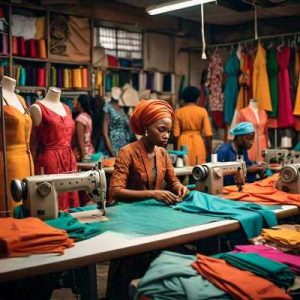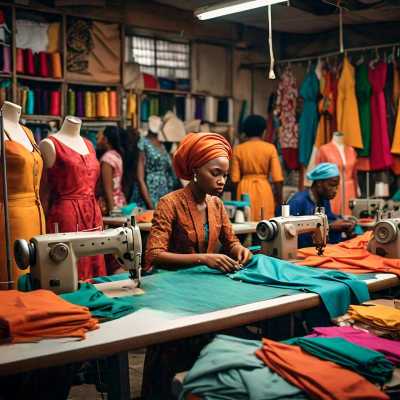In recent years, the global fashion industry has witnessed a significant shift towards sustainability. This movement has not only captured the attention of consumers but also inspired local designers in Nigeria to innovate and adapt traditional practices into modern fashion. The result is a vibrant and growing scene that emphasizes environmental consciousness, ethical production, and cultural heritage.
The Rise of Sustainable Fashion
Sustainable fashion refers to a design philosophy that prioritizes ecological and social responsibility. In Nigeria, the emergence of this movement can be traced back to growing awareness of environmental issues, the impact of fast fashion, and a rich tradition of craftsmanship. As consumers become more conscious of the implications of their purchases, local designers are stepping up to offer alternatives that are both stylish and sustainable.
Local Designers Leading the Charge

Several Nigerian designers are at the forefront of the sustainable fashion movement. They are utilizing locally sourced materials, traditional techniques, and ethical labor practices to create unique pieces that resonate with both local and global audiences.
- Lisa Folawiyo: Renowned for her modern take on traditional West African textiles, Folawiyo emphasizes craftsmanship and sustainability. Her collections often incorporate hand-embellished designs and locally sourced fabrics, showcasing the richness of Nigerian culture.
- Wana Sambo: Wana Sambo’s work reflects a commitment to ethical fashion through the use of sustainable materials. Her designs are characterized by bold colors and innovative cuts, appealing to the contemporary fashionista while supporting local artisans.
- Maki Oh: Founded by Amaka Osakwe, Maki Oh is celebrated for its use of traditional Nigerian techniques, such as hand-dyeing and embroidery. The brand is dedicated to empowering local communities and preserving cultural heritage, making it a key player in the sustainable fashion landscape.
Local Designer Innovations in Materials and Techniques
One of the most exciting aspects of sustainable fashion in Nigeria is the innovative use of materials. Many designers are reviving traditional textiles like adire and kente, which not only celebrate Nigerian culture but also reduce the carbon footprint associated with synthetic fabrics. Furthermore, some brands are exploring upcycling, transforming waste materials into fashionable garments, thus addressing the issue of textile waste.
Challenges and Opportunities
While the movement is gaining momentum, challenges remain. Limited access to sustainable materials, high production costs, and a market still heavily influenced by fast fashion can hinder growth. However, the rise of online platforms and social media is creating new opportunities for exposure and sales. Local designers are leveraging these tools to reach a global audience, showcasing their commitment to sustainability while educating consumers about the importance of ethical fashion.
The Role of Consumers
The growth of sustainable fashion in Nigeria also depends on consumer awareness and engagement. As more individuals seek to make informed choices, the demand for sustainable products increases, encouraging designers to innovate further. This shift not only supports local economies but also fosters a sense of community around ethical fashion.
Modern Fashion Design in Nigeria
Nigeria’s fashion landscape has transformed dramatically over recent years, evolving into a vibrant expression of culture, creativity, and innovation. The modern fashion scene reflects a blend of traditional influences and contemporary trends, showcasing the unique identity of Nigerian designers on the global stage.
A Fusion of Tradition and Modernity
At the heart of modern Nigerian fashion is the seamless integration of traditional fabrics and styles with contemporary designs. Designers often draw inspiration from indigenous materials such as Ankara, Aso Oke, and lace, reinterpreting them into modern silhouettes that appeal to both local and international markets. This fusion not only preserves cultural heritage but also showcases Nigeria’s rich textile traditions.
Emerging Designers and Global Recognition
The rise of talented designers has put Nigeria on the fashion map. Names like Lisa Folawiyo, Maxhosa Africa, and Tsemaye Binitie are gaining international acclaim for their innovative designs that celebrate African aesthetics. Fashion weeks in Lagos and other major cities are becoming significant events, attracting global attention and fostering collaboration among creatives.
The Role of Social Media
Social media has been a game-changer for Nigerian fashion, providing a platform for designers to showcase their work and reach wider audiences. Instagram, in particular, has become a crucial tool for marketing, allowing emerging designers to build brands and connect with fashion enthusiasts worldwide. Influencers and fashion bloggers further amplify these efforts, promoting Nigerian fashion culture and trends.
Sustainability and Ethical Fashion
As global awareness of sustainability grows, Nigerian designers are also embracing eco-friendly practices. Many are using local materials, promoting fair labor practices, and focusing on reducing waste. This shift towards sustainable fashion reflects a broader commitment to social and environmental responsibility within the industry.
Modern fashion design in Nigeria is not just about clothing; it’s a celebration of identity, creativity, and innovation. As Nigerian designers continue to gain recognition, the global fashion industry is increasingly influenced by the unique narratives and styles emerging from this vibrant country. The future of Nigerian fashion looks promising, with a rich tapestry of tradition and modernity poised to captivate the world.
Conclusion
Sustainable fashion in Nigeria is not just a trend; it is a movement rooted in cultural pride, environmental stewardship, and ethical practices. Local designers are not only making waves but are also redefining what it means to be fashionable in a way that honors the planet and its people. As this movement continues to grow, it has the potential to inspire change both locally and globally, paving the way for a more sustainable future in fashion.


